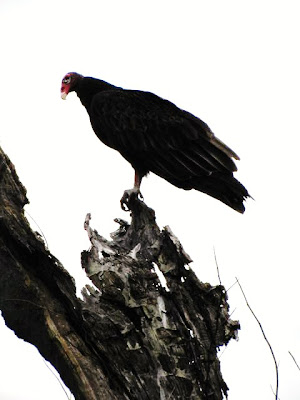A summer fish kill at Charleston's Magnolia Cemetery attracted...what else? Vultures!
The two types of Vultures-- Turkey (above) and Black (below) were present and accounted for. The Black Vulture shares a branch with some Wood Storks.
There's no mistaking the differences between the two types of Vultures. The Turkey one has the red head. This one has some weird stuff going on around its eyes.
The Wood Storks didn't mind the Vultures being around. The Black Vulture's wingspan is around five feet. The Wood Stork's is a bit larger at five and a half feet.
I read this about Vultures: "Decay is their ally, softening the bodies of large animals so that they can be picked clean." I'm not touching the cemetery anologies!
"But an old carcass can be a messy meal, and so it is that the vulture's head is naked, unfeathered-- not pretty perhaps, but beautifully suited to the way this hardworking bird makes its living." (Quotes are from the Reader's Digest "Book of North American Birds")
Vultures-- nature's clean up crew.


























